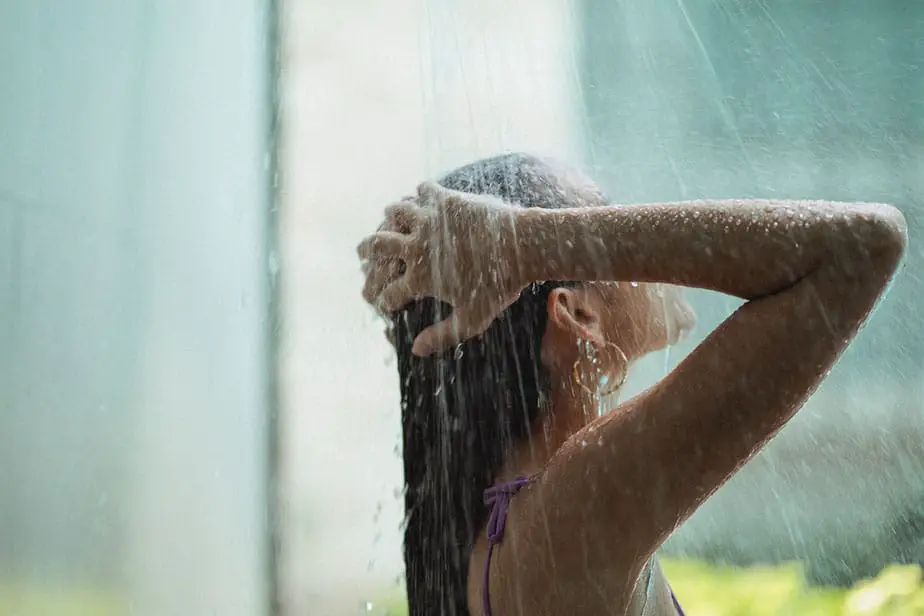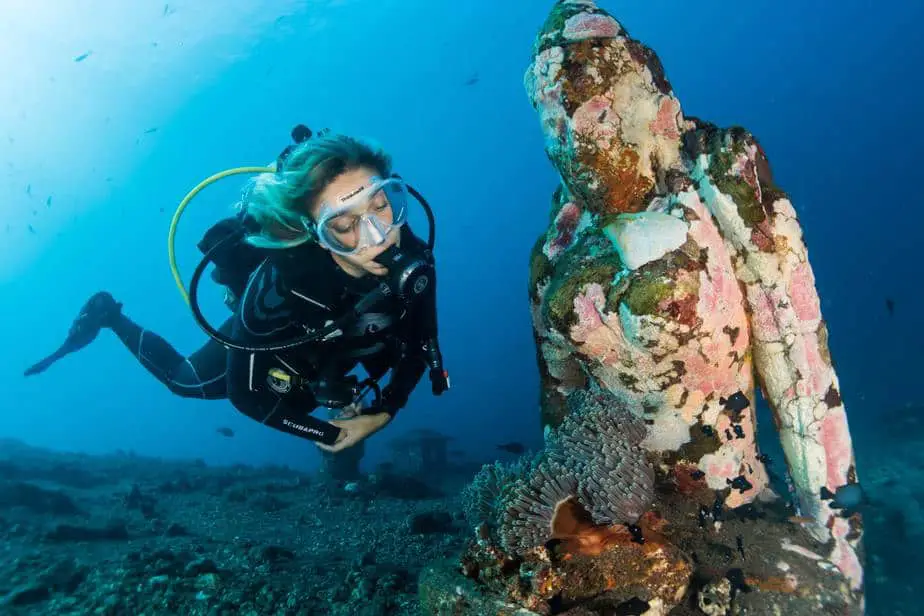Aren’t sure how to wear your hair for scuba diving? It’s a common and frustrating topic of conversation for women and men with long hair. Spending hours each day in saltwater can destroy your locks. Rather than lopping it all off, isn’t there a better way of doing things? We’ve got a few solutions for you.
In Disney’s The Little Mermaid, Ariel’s voluminous and luscious hair would flow freely and gracefully around her as she glided through the water. Many girls were jealous and in awe of how Ariel kept her hair looking so immaculate. In reality, if you let your hair flow freely like that during a dive, you’ll surface with what can be best described as a bird’s nest on your head.
So if you’re a normal human being without mermaid hair or the power of Disney magic on your side, this article will provide some hair preservation tips for divers with long hair. With that said no head of hair is the same, and so your mileage may vary with some of these tips. Furthermore, this list is in no way comprehensive, however it’s meant to be a starting point that can lead to further research if you want.
Best Ways to Wear Long Hair When Scuba Diving
Note: When it comes to long hair tips for scuba diving, you can basically put the tips into two categories: moisture preservation and movement restriction.
Moisture Preservation
Like skin, hair needs to stay hydrated. Since saltwater is filled with copious amounts of salt, it actually extracts water from your hair. If you spend hours in seawater everyday, then you can expect: dry hair, split ends, knots. Basically, it’ll feel like your hair is made of straw. You will need to keep your hair moisturized to keep it healthy.
The main principle of moisture preservation is that hair absorbs the first liquid it comes into contact with. So if you moisturize your hair with something other than saltwater before heading out, then you can minimize the damage done to your hair.
Movement Restriction
You may be tempted to let your hair flow freely like Ariel, but for many girls, movement leads to trouble. The second way to preserve your hair is to keep your hair locked in place while scuba diving. Even if you hydrate your hair, if it’s not held down, then you’ll surface with a tangled mess of hair that can only be dealt with using a pair of scissors. Not ideal.
In the next section, we’ll go over the most common ways to deal with long hair while scuba diving.
Moisture Preservation Tips
Coconut Oil
Oil is a water repellant, so you can apply some coconut oil into your hair before entering the water to keep saltwater from getting absorbed. With that said, coconut oil is not effective for every hair type. Experts have found that in some cases it can dry out your hair and make it even more brittle than before. So before you go loco for some coco(nut) oil, do a test run above the surface first.
Hair Conditioner
Using hair conditioners can apply a similar barrier around your locks as coconut oil, but it won’t make it as heavy. When using hair conditioner, we highly recommend using a reef-safe conditioner such as this one. For the same reason why you should use reef-safe sunscreen, we should not be using products that are destroying the reef if there are better alternatives available.
When using hair conditioner, you may have to apply it more often. We found that after just one dive, all of the conditioner had been rinsed off. So if you’re doing multiple dives in a day, you should reapply the conditioner before each dive. It may sound annoying, but unless you want to see bleached coral everywhere you dive, then it’s a small sacrifice to make.
Freshwater
No hair care products on hand? Or maybe you just aren’t a fan of applying so much hair product just to go for a dive. At the very least, you should rinse your hair with freshwater (thereby saturing it) before heading into the water works wonders. Diving is complicated enough as it is, so let’s keep things simple when it comes to hair prep.
After-Care

How do you take care of your hair after a diving session? The most important step to prevent it from cracking is to rinse with fresh water immediately after a dive. As soon as you doff all your dive gear, your priority should be to moisturize your face and hair with as much freshwater as possible.
Note: try not to use drinking water as your source of freshwater. Not all divers prioritize hair care as much as you do, and unless you’re using your own water, they may find it to be wasteful. With that said, most dive operations should have additional freshwater for boat cleaning, etc., that they’ll let guests use as well. When diving from shore, just hop into the nearest shower.
Movement Restriction Tips
Headband
Headbands are useful for two reasons: 1) it protects your forehead from getting sunburned, and 2) it keeps those pesky shorter hairs near your face away from your mask. If you’ve ever had problems with your mask getting a tight seal because strands of hair keep getting in the way, then a headband will be your best friend.
Dive Hood
If you want something a bit more heavy-duty than a headband, a dive hood will not only do an even better job at securing your hair, but it also will keep your head warm. As much as 60% of your body heat is lost through your head.
So even if you spend your time in warm waters, your body temperature can drop substantially without extra head protection. For warm water diving, a 3mm dive hood should be enough, but you can also find ones that are 5mm and 7mm thick.
Braids
Many divers French braid their hair to keep it in place and swear by it. This method is especially effective if you have long, thick hair. Braids will not only prevent nasty knots from forming at the end of the day, but they look very cute as well.
Unfortunately, braids are not as effective on finer, shorter hair, and may fall apart if you do multiple dives in one day. However, it should at least stay put for the first dive. Some people find french braiding their hair to be difficult and would rather just wear a dive hood instead.
Hair Ties
An even easier method than braiding your hair is to simply use a generous amount of hair ties. This is basically an idiot-proof way to keep your hair secure. First, you’ll need a lot of hair ties. The longer your hair, the more hair ties you need.
Next, make a normal ponytail, but instead of using just one hair tie, you’ll keep adding hair ties every couple of inches all the way down to the end. You can use a low ponytail to minimize knots, however it works for a high ponytail as well.
Neoprene Mask Strap
Regardless of how healthy and strong your hair is, if you use the regular strap on your dive mask, you’re going to rip out a few strands of hair every time you take off your mask. Mask straps are typically made of silicone, which loves to latch onto hair and yank them out.
To prevent this, you can purchase a neoprene strap cover that fits over the silicone strap so that it doesn’t come into direct contact with your hair. With one of these, you won’t have to cringe at how much hair is going to get yanked out every time you take off your mask.
What To Do With Long Hair While Scuba Diving Summary
Now you know some basic ways to keep your hair hydrated and healthy. To recap, you should first saturate your hair using coconut oil or a reef-safe conditioner prior to heading into the water. If you don’t like using any hair products, then at least rinse your hair in freshwater before, and after the dive.
You should also restrict hair movement by wearing a headband, or dive hood, or you can french braid your hair (expert mode) or you can simply use a generous amount of hair ties instead (idiot-proof). And lastly, we recommend always using a neoprene mask strap to prevent your hair from getting yanked out.
And if all of these things end up failing you, then I suppose admitting defeat and lopping off all of your hair can be the final option. It just depends on whether you love having long hair or scuba diving hassle-free more.
Last update on 2024-10-16 / Affiliate links / Images from Amazon Product Advertising API

